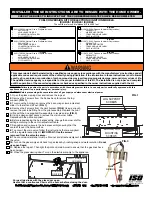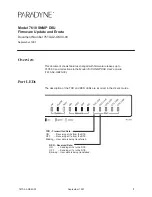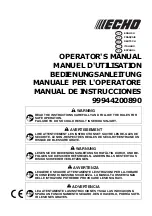
2
©
mcl/Kampa/2016
Kampa UK Limited
Witham, CM8 3EU
SET UP
The annexe can be fitted to either side of the awning, or both.
1. Remove the relevant side panel from the awning by un-pegging and unzipping the
panel.
2. Zip in the annexe making sure that it is not inside out.
3. Undo the top cap and attach the pump, that came with your awning, to the inflation
valve. The pump has a pressure gauge and the AirPole should be inflated to 7 psi
(0.482 bar).
4. Peg out the annexe starting with the two corners closest to the awning, then the two
far corners and then the intermediate pegging points.
5. Peg out the guy lines.
6. Ensure that the sides and roof of the annexe are taut and re-peg if necessary.
7. Go inside and hang the inner tent from the “O” rings on the inside of the annexe
ensuring that the door is facing to the front. Peg down the four corners of the inner
tent groundsheet.
SEAMS
The main seams of this annexe have been factory taped to help prevent leakage. Depending
upon your expectations, it may be necessary to treat the remaining seams with a seam sealant.
Seam sealant should also be applied to areas where the taping is damaged or has peeled
away through wear and tear. It can also be applied to areas where a leak may have
developed. Seam sealant is available through your dealer.
SUITABILITY
This annexe and your awning are designed for use in light to moderate weather. During strong
winds or snowfall we recommend that you take your awning down. The awning is designed
for occasional use; it is not designed for static or commercial use.
UV DEGRADATION
Awning fabrics can be weakened by prolonged exposure to sunlight. Under normal holiday
use your awning will give long service but use for extended periods in strong sunlight will soon
cause deterioration. In those cases it would be wise to use a site as shaded as possible. UV
degradation is not covered under the warranty. The warranty does not cover products used
on permanent sites, displays or for commercial purposes.
CONDENSATION
Awnings contain a high proportion of synthetic materials and under certain conditions will be
affected by condensation inside the awning. This should not be confused with leaking and
condensation can be improved by ensuring adequate ventilation. Condensation and its effects
are not covered under the warranty.




















